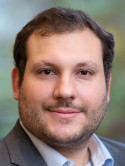Exploring Auger electron-emitting radionuclides for targeted DNA damage in mismatch repair-deficient cells: A theoretical study of (99)Rh- and (123)I-labeled metalloinsertors Journal Article
| Authors: | Velo, A. F.; Carter, L.; Bellamy, M.; Cornejo, M. A.; Zeglis, B. M.; Humm, J. L. |
| Article Title: | Exploring Auger electron-emitting radionuclides for targeted DNA damage in mismatch repair-deficient cells: A theoretical study of (99)Rh- and (123)I-labeled metalloinsertors |
| Abstract: | Purpose: Preserving the integrity of the genome is critical to healthy cellular growth and development. Under normal circumstances, the eukaryotic mismatch repair (MMR) machinery is effective at detecting DNA polymerase errors and maintaining the fidelity of the genome. However, cells with inactivated MMR machinery are prone to the accumulation of mutations and tumorigenesis. This study explores the theoretical potential of rhodium-99- and iodine-123-labeled DNA metalloinsertors as Auger electron-emitting radiotherapeutics for cancers characterized by MMR deficiency. Materials and methods: A Monte Carlo code was developed in MATLAB® to obtain Auger electron energy spectra for 99Rh and 123I. Using Geant4 track structure simulations, we determined the difference in effectiveness of these two Auger electron-emitting radionuclides in direct damage to DNA and the ability to produce double strand break damage (dsb) to the DNA comparing two different constructors ‘G4EmDNAPhysics_option2’ and ‘G4EmDNAPhysics_option4’. Results: Differences in the Auger electron emission spectra of 99Rh and 123I arise from their electronic structure: 123I favors more complex cascades and ultra-low-energy electrons, while 99Rh produces electrons with energies more suited to DNA damage. Despite similar total electron yields, the emissions of 99Rh are more effective at causing dsb (0.71 vs. 0.60 dsb/decay for 99Rh and 123I, respectively, using constructor ‘G4EmDNAPhysics_option2’ and 0.81 dsb/decay for 99Rh vs. 0.71 dsb/decay for 123I when using ‘G4EmDNAPhysics_option4’. Conclusion: This theoretical study leverages both simulation and comparative analyses to identify 99Rh as a promising Auger electron-emitting nuclide for radiotheranostics, as it offers superior DNA damage efficacy compared to 123I. © Copyright © 2025 Taylor & Francis Group LLC. |
| Keywords: | monte carlo simulation; auger electron radiotherapy; geatn4 track code; metalloinsertors; mismatch repair machinery |
| Journal Title: | International Journal of Radiation Biology |
| ISSN: | 0955-3002 |
| Publisher: | Taylor & Francis Group Ltd. |
| Publication status: | Online ahead of print |
| Date Published: | 2025-06-20 |
| Online Publication Date: | 2025-06-20 |
| Language: | English |
| DOI: | 10.1080/09553002.2025.2517328 |
| PROVIDER: | scopus |
| PUBMED: | 40539858 |
| PMCID: | PMC12314735 |
| DOI/URL: | |
| Notes: | The MSK Cancer Center Support Grant (P30 CA008748) is acknowledge in the PDF -- Corresponding authors is MSK author: John L. Humm -- Source: Scopus |
Altmetric
Citation Impact
BMJ Impact Analytics
MSK Authors
Related MSK Work








